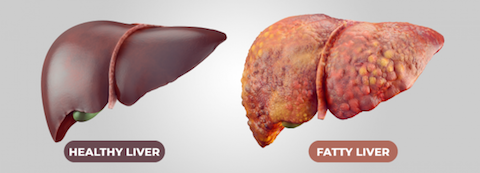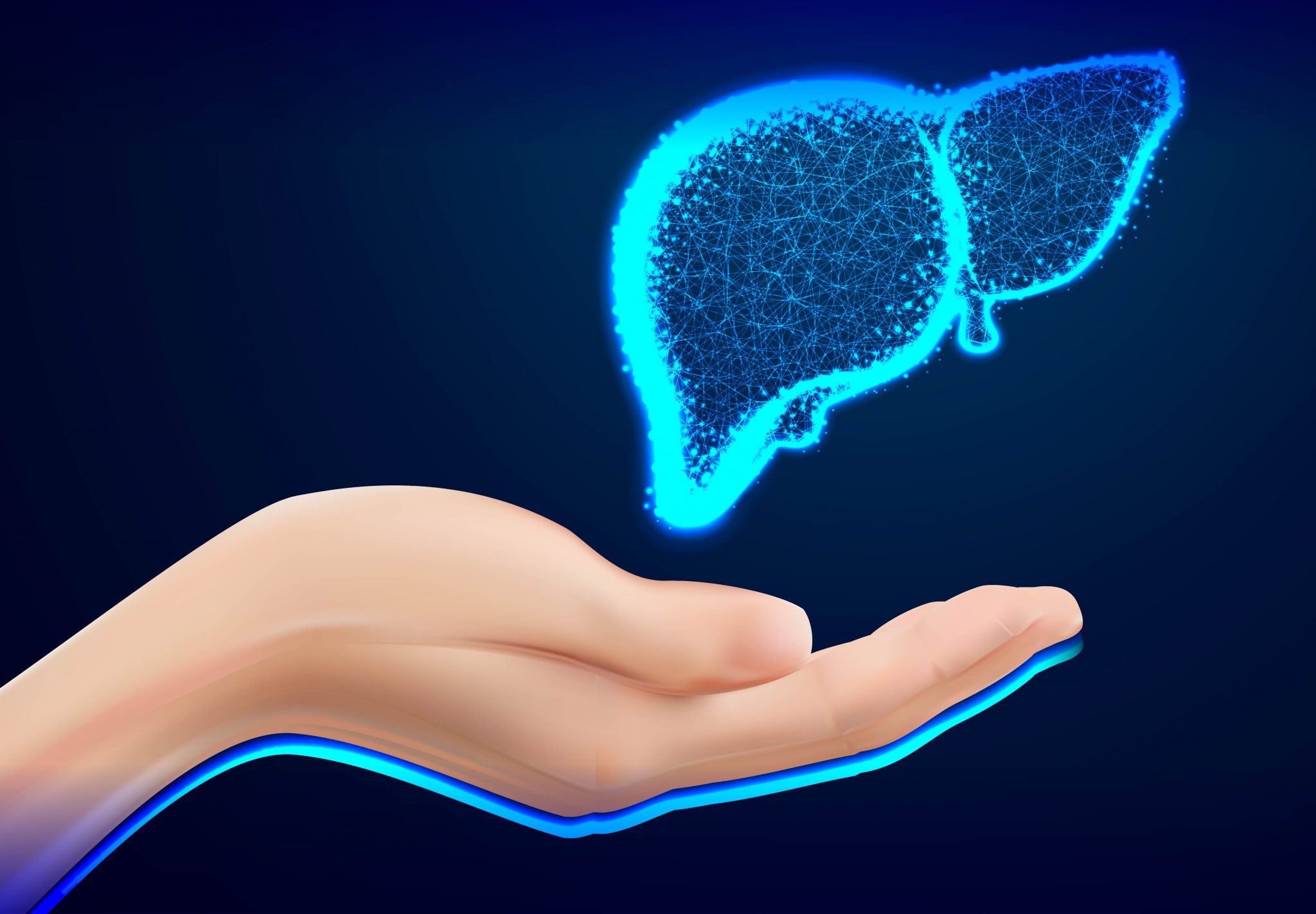Fatty liver disease refers to the accumulation of fat in the liver. Having a small amounts of fat in your liver is normal, however too much fat in your liver can lead to long term liver damage.
When old liver cells are damaged, the liver constantly repairs itself by regenerating new liver cells. However, scarring can take place permanently in the liver when there is repeated damage, which is known as cirrhosis.

The most common cause of fatty liver is by drinking too much alcohol. However, people who don’t drink much alcohol can develop fatty liver disease as well, which is known as non-alcoholic fatty liver disease.
What is Non-alcoholic Fatty Liver Disease (NAFLD)?
Non-alcoholic fatty liver disease (NAFLD) is a common cause of chronic liver disease and its incidence is rising worldwide. The prevalence of NAFLD is up to 30% in developed countries and nearly 10% in developing countries, making NAFLD the most common liver condition in the world. NAFLD is strongly associated with a number of metabolic risk factors, such as diabetes, high cholesterol, cardiovascular disease and obesity.
NAFLD may progress to cirrhosis or directly to Hepatocellular Carcinoma (HCC) and is probably an important cause of cryptogenic cirrhosis (occurs without an apparent underlying reason).
How does this affect you?
NAFLD causes central obesity or diabetes. NAFLD patients are at increase risk of liver-related as well as cardiovascular mortality, and NAFLD is rapidly becoming the leading indication for liver transplantation.
However, NAFLD often has no associated symptoms. If symptoms presents itself, they can include:
- swelling in the belly
- pain in the upper right side of the abdomen
- enlarged liver/spleen (detected during doctor’s examination)
- fatigue
- jaundice (yellowing of skin and eyes)
More than half of NAFLD patients will progress to non-alcoholic steatohepatitis (NASH), though the risk increases significantly in the context of obesity. This is commonly considered as a more advanced form of NAFLD, which can include abnormal retention of fat in liver cells, liver cells injury and inflammation, death of liver cells, liver fibrosis and scarring of liver cells and a significantly increased risk of liver cancer.
NASH significantly increases both overall death and liver-related death, with the most common causes of death being cirrhosis and liver failure, tumour, sepsis, variceal heamorrhage and cardiovascular disease.
Genetics and NAFLD
Both environmental and genetic factors can affect the development and progression of NAFLD. The effect of genetic factors has been demonstrated by familial studies, twin studies and several cross-sectional studies.
In the past 10 years, genome-wide association studies have revealed several single nucleotide polymorphisms (SNPs) associated with the pathology of NAFLD.
Among them, the Patatin-like phospholipase domain-containing 3 (PNPLA3) gene variant I148M showed a strong relationship with the development and progression of NAFLD, NASH, and NAFLD-related HCC. The transmembrane 6 superfamily member 2 (TM6SF2) gene variant E167 K was also associated with NAFLD. It has a relationship with cardiovascular disease
Furthermore, based on case-control studies, several genes have been proposed as candidate genes to be associated with NAFLD . More studies will be required to establish a better relationship between genetics and the development of NAFLD but review shows promising prospects.
What can you do about it?

Diet:
- Have a balanced intake of vitamin E, vitamin D, omega-3 fatty acids, and olive oil containing omega-9 fatty acids
- Have a balanced diet, with lots of fruits, vegetables and whole grains
- Avoid soft drinks
- Control your cholesterol and blood glucose levels
- Avoid alcohol
Lifestyle:
- Weight reduction through diet and exercise (if you are overweight or obese)
- Increase physical activities to include at least 30 minutes of exercise daily
References:
Angulo, P. (2002). Nonalcoholic fatty liver disease. New England Journal of Medicine, 346(16), 1221-1231.
Chalasani, N., Younossi, Z., Lavine, J. E., Diehl, A. M., Brunt, E. M., Cusi, K., & Sanyal, A. J. (2012). The diagnosis and management of non‐alcoholic fatty liver disease: Practice Guideline by the American Association for the Study of Liver Diseases, American College of Gastroenterology, and the American Gastroenterological Association. Hepatology, 55(6), 2005-2023.
Seko, Y., Yamaguchi, K., & Itoh, Y. (2018). The genetic backgrounds in nonalcoholic fatty liver disease. Clinical journal of gastroenterology, 11(2), 97-102.
Younossi et al. (2016). Global epidemiology of nonalcoholic fatty liver disease-Meta-analytic assessment of prevalence, incidence, and outcomes. Hepatology, 64(1), 73-84. PMID: 26707365.

